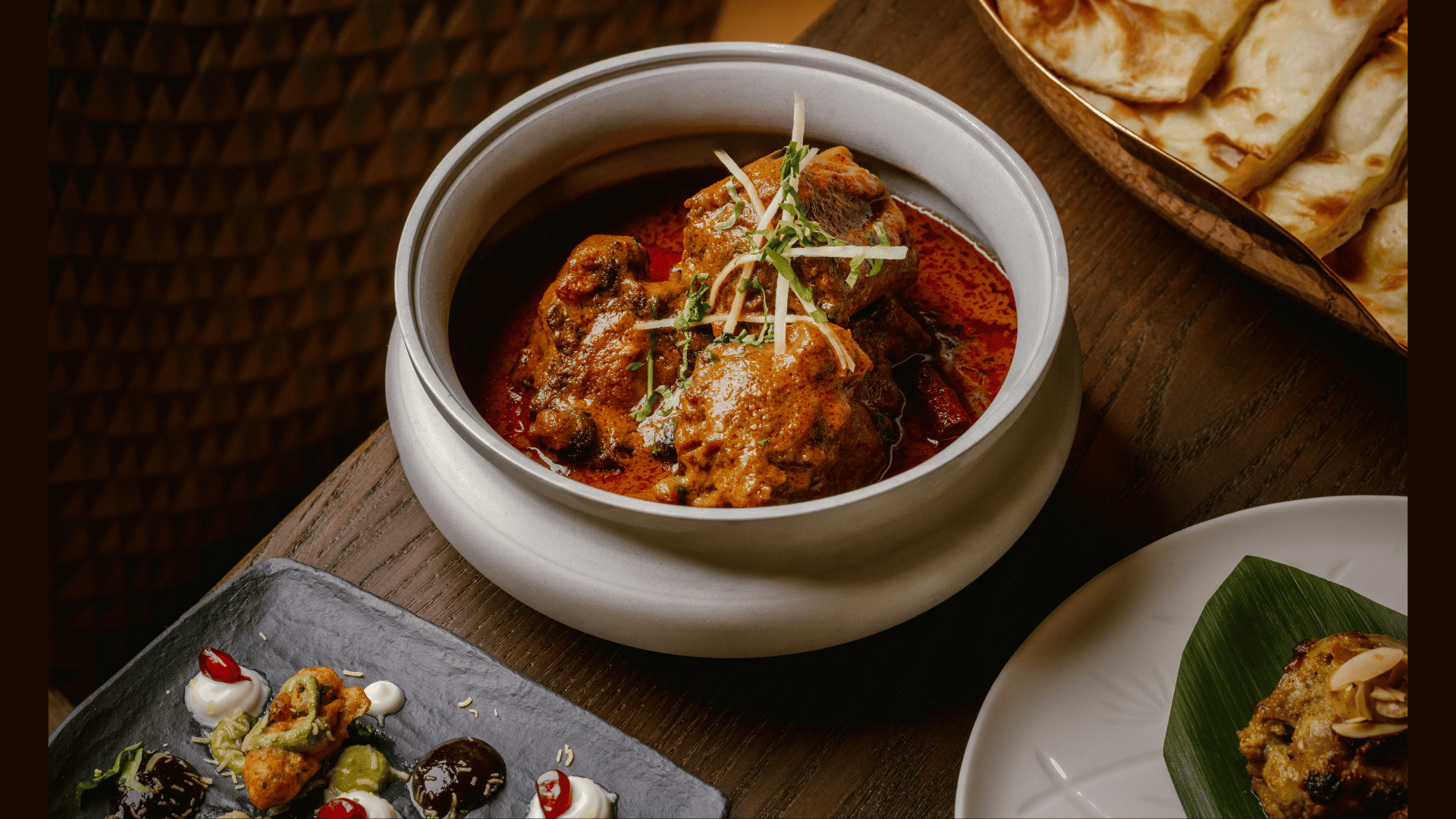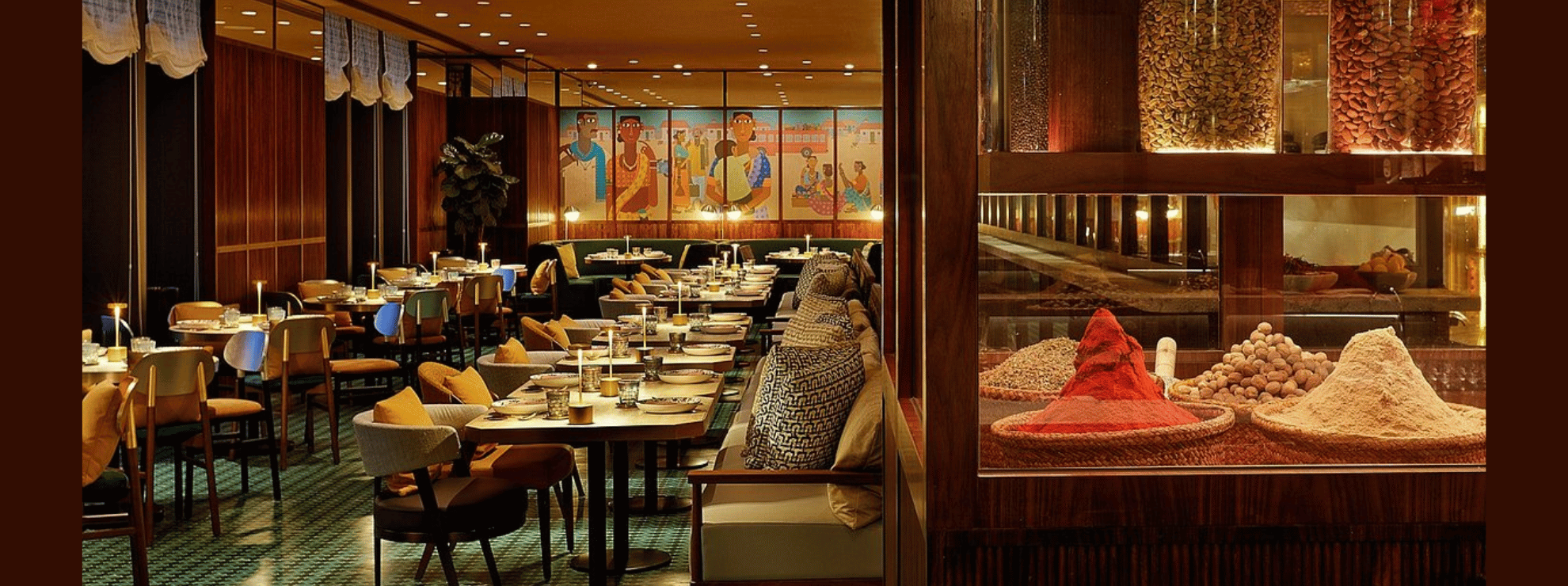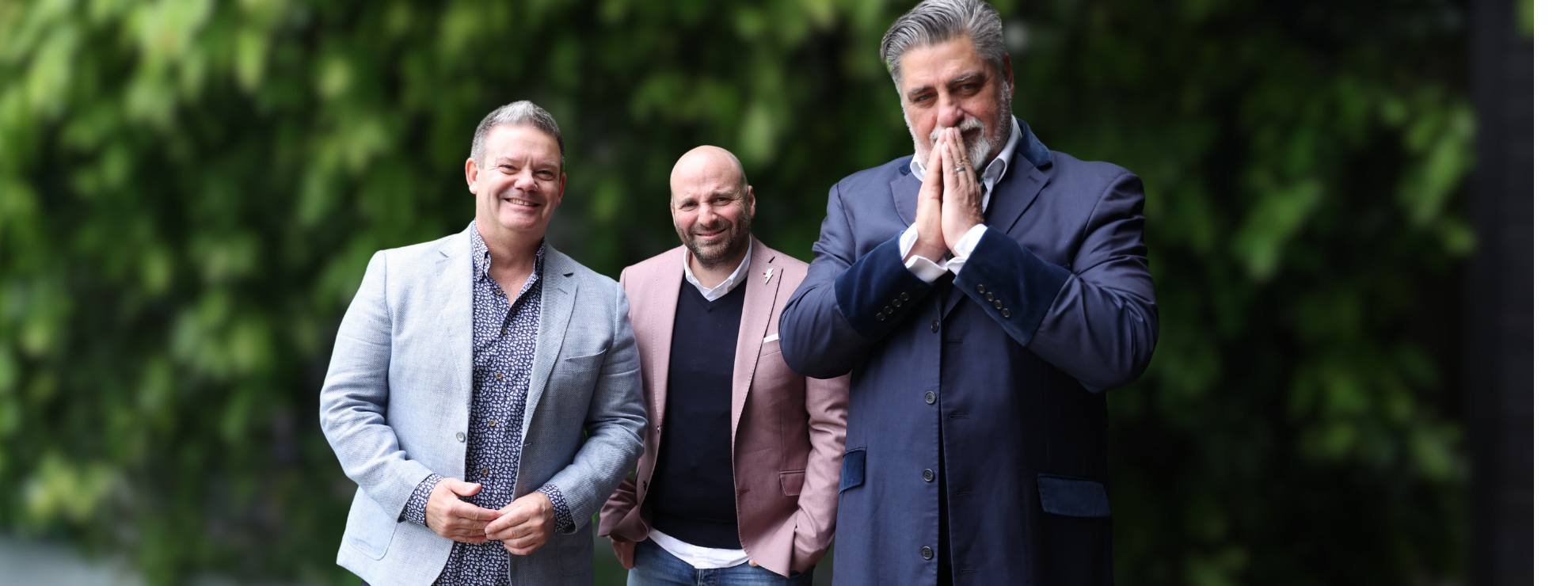(August 25, 2024) Rooted in tradition, Chef Manav Tuli, the man behind the Michelin-starred restaurant at Chaat, Hong Kong, likes to innovate. Now a chef-owner at Leela, Chef Manav’s love for improvisation has resulted in eclectic offerings like Oxtail Chakundar Gosht (cooked with beetroot and its leaves), Jackfruit Dabeli Bao and Tandoori pork ribs. From the iconic Chutney Mary in London, to winning a Michelin Star at Chaat in Hong Kong, and branching out as an entrepreneur, Chef Manav Tuli shares his incredible journey with Global Indian.
Chef Manav Tuli’s career milestones have the knack of propelling him to the next one. As also the setbacks his family had witnessed, when they moved to India, post-partition. Chef Manav recalls how he chose to become a chef. “My grandparents came from a wealthy family but lost everything after the partition,” he says. His grandfather was offered a government grant, which he refused, and went on to set up a restaurant of his own. However, things ended badly, when he was cheated by his business partners. “He lost his will to live after the losses. When my father grew up, those people gave him a job at the same restaurant. By the time I grew up, my father did not have good memories of those times and had a low opinion of the hospitality field. He was quite apprehensive of this profession and it was not considered prestigious during that time.”

Chef Manav Tuli
A journey begins
To escape the pressure of pursuing a medical or engineering degree like the children of family friends were doing, Chef Manav joined the Indian Institute of Hotel Management, in faraway Thiruvananthapuram. “This led to my first job as a Commis at The Trident, Udaipur,” he says. This was followed by a post-graduate diploma at the Oberoi Centre of Learning and Development. During the two-year course, he travelled to Jaipur, Mumbai, New Delhi and Gurgaon between semesters and his final posting was at The Oberoi in Mumbai.”
Interestingly, Chef Manav witnessed the harrowing events of 26/11 at that time. He reveals, “I was leaving for Mauritius, and we had a party organised at the nearby Hotel Marine Plaza. Chef Matthew Crop’s (my boss) wife decided to leave the party early and went back to the hotel. That is when we heard about the terrorist attack and followed him there. We were not allowed to enter and all of us stayed near the Inox cinema complex across the road. It was a terrifying three days, but she was alright when the attack ended.”
Iconic brands and taking risks
Chef Manav admits he tends to keep asking himself, what next? From 2008 to 2011, he worked at the InterContinental in Mauritius. As far as cuisines went, he gravitated towards Indian cuisines. “At OCLD, we were taught all cuisines and I used to think, and even speak with my head chefs that I was wasting my time learning Italian or Japanese cuisines,” he admits. “I knew I would eventually be a chef making Indian food. This is because I believe that even if an Indian chef interprets something differently, an Indian making Indian food will always be accepted.” However, his diverse training paid off, resulting in his unique style.
Armed with early childhood influences of his grandmother cooking, and even pickling wild boar meat, Chef Manav, who was drawn to the nuances of fine dining, headed to London, where he joined Chutney Mary. It was a career milestone and Chef Manav and his wife lived in a studio apartment, saved as much as they could, and finally bought their own place. “My refinement as a chef happened in London.” There, he was also involved with the opening of Tamarind when it was rebranded with Chef Karunesh Khanna for the first year.

Chakundar Oxtail Ghosht
After eight years in London, Chef Manav was bogged down by monotony and wanted something more. The restaurant owners idea of rebranding was sending me to Mumbai with a list of restaurants to eat at and then recreating those dishes in London. That process did teach me a lot, but I also wanted to express myself more and discover uncharted waters.”
As luck would have it, Chef Manav joined Tamarind restaurant and did the opening as Head Chef. Soon, he got a call from his previous chef at Chutney Mary – Chef Siddharth Krishna – asking if he was interested in joining Rosewood Hotels at their flagship property in Hong Kong to launch Chaat, their Indian restaurant – the first Indian restaurant in Hong Kong at a five-star hotel. “I had no clue about Hong Kong, had never even been there, but I said yes.”
Success in the Orient
Moving to another country and city, despite being comfortable, was the result of Chef Manav’s philosophy. He says, “Your definition of success changes after doing the same job for seven years. It progresses with time, age and money. I knew that I would probably feel the same unrest at Tamarind after a while.” So, he decided to move, although his daughter was only eight months old and his wife had a steady job. The family landed in Hong Kong on 29th August 2019; amidst social unrest and riots. “The project got delayed and I started thinking that maybe I had made the wrong decision. But, we finally launched in May 2020, during Covid.”
There were several challenges starting from the fact that Chef Manav did not even like the name Chaat. “The name did not excite me; the first impression was that we would be serving extensive chaats,” he says. “Later it did make sense when I came up with the idea of ‘serving street food of India in an elevated manner’ and gave it a story by including kababs, biryanis, and curries, all of which are also available on the streets.”
Chef Manav spent the lockdown doing menu testing and tasting, besides cooking for VIPs and the staff, using the experience as an exercise in understanding local tastes and preferences. The restaurant became a huge success and some of the bestsellers he created here include the Octopus Biryani, Tandoori Tomahawk, Tandoori Char Siu, Raj Kachori, Baked Samosa made like a cream horn, with stuffings ranging from lamb to plant-based meat derived from jackfruit.
View this post on Instagram
In 2022, under his leadership, Chaat won a Michelin star. He recalls how that panned out. “Michelin star for any Chef is the most unbiased and most prestigious award in the culinary world in my opinion. At Chaat, I was allowed to spread my wings and innovate. Pearl Yan, who was with Michelin Star approached us saying they were conducting interviews with chefs around the city. Halfway through it, she got a call which she answered. I found it rather odd that with all the camera people around, and in the middle of an interview, she was answering her phone. Then she gave me the phone and said, “This call is for you.” It was the Michelin team informing me that we had been awarded the Michelin Star! I started crying; I couldn’t believe it. It was one of the best days of my life,” he says.
The move to entrepreneurship
Again, the desire to move after the biggest achievement of a chef’s career struck. But he was now looking to be a chef-owner. It was a plan at the back of his mind that came to fruition sooner than he expected. He says, “At a chefs’ lunch, I met a friend, Chef Agustin Balbi and I asked him how he had launched Andō – the Michelin-starred Spanish Japanese restaurant. He had spoken to Yenn Wong, the CEO of the JIA group who helped him launch it. He connected me with her and we decided to launch Leela, at Causeway Bay.”
Leaving a well-established Michelin-star restaurant to launch a new brand was a risk. But Chef Manav was confident of his abilities despite the opening pangs. “I had peaked at Chaat, and was hungry for more. I wanted to leave before the monotony set in. Besides, as a partner, the perspectives are different from when you are working for someone.”
Tradition meets innovation meets fine dining
The cuisine at Leela is markedly different from that of Chaat despite the inevitable comparisons. Chef Manav says, “I cook traditional Indian food but I innovate too. The Oxtail Chakundar Gosht [meat cooked with beetroot and its leaves] and Paneer Chestnut are popular. The Tokri Chaat, Jackfruit Dabeli Bao, Tandoori Pork Ribs, Kandhari Lamb Chops and the Bone Marrow Biryani are bestsellers. We change the menu incrementally every three months. I intend to showcase royal recipes from Greater India – the area that was the Indian empire during the Maurya kingdom in the third century BCE. Essentially, recipes from Greater India.”
Chef Manav’s style remains rooted in tradition, but his creations are authentic and innovative with the application of two of his favourite expressions – refinement and balance. He is also working on a recipe book with all his recipes but claims he has a long way to go before it is ready. Knowing his questioning nature, it should appear soon.
- Follow Chef Manav Tuli, Leela Hong Kong and Chaat on Instagram.
Read a similar story Vikas Khanna, a Michelin-starred chef.



